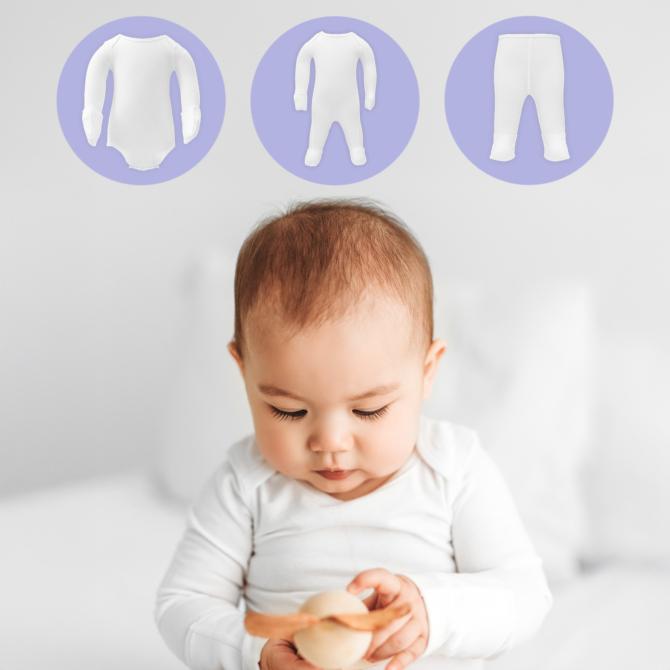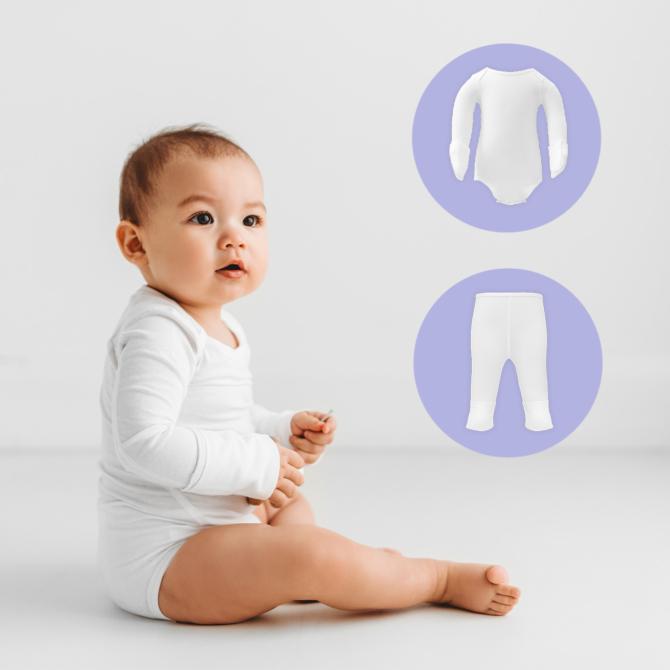In the delicate world of infancy, where every touch shapes comfort and every fabric tells a story, choosing the right clothes for a baby is more than just a routine task-it’s an act of care. For parents of little ones with sensitive skin, this choice becomes even more crucial. Baby clothes made for sensitive skin blend thoughtful design with gentle materials, creating a soft embrace that protects and soothes. In this article, we explore how these specially crafted garments are redefining what it means to dress a baby, offering both peace of mind and a tender touch for the most precious bundle in your life.
Understanding Sensitive Skin in Babies
Babies have incredibly delicate skin that is more permeable and sensitive than adults. This fragile barrier can react to everyday materials, detergents, and environmental factors, resulting in redness, dryness, or irritation. Understanding the specific needs of baby skin helps caregivers make informed choices, ensuring comfort and protection rather than discomfort or rash. The texture, breathability, and hypoallergenic properties of fabrics play a vital role in maintaining a healthy skin environment.
When selecting apparel for sensitive skin, it’s essential to prioritize features such as:
- Natural, organic materials free from harsh dyes and chemicals
- Soft, seamless designs to minimize friction and pressure
- Moisture-wicking fabrics that allow the skin to breathe
- Easy-to-clean and durable fibers without synthetic additives
To better visualize the benefits, here’s a quick comparison of fabric qualities for sensitive baby skin:
| Fabric Type | Skin Sensitivity | Breathability | Easy Care |
|---|---|---|---|
| Organic Cotton | Excellent | High | Good |
| Bamboo | Very Good | Excellent | Moderate |
| Synthetic Fabrics | Poor | Low | Good |

Choosing the Right Fabrics for Gentle Comfort
When selecting clothes for your little one, prioritize fabrics that not only feel soft but also nurture delicate skin. Natural fibers like organic cotton and bamboo are prized for their breathability and hypoallergenic properties, reducing the chance of irritation and rashes. Beyond softness, their moisture-wicking capabilities keep babies cool and dry, helping prevent discomfort during sensitive growth stages.
It’s essential to steer clear of materials treated with harsh chemicals or synthetic blends that can trigger sensitivity. Here’s a quick guide to fabrics best suited for gentle baby wear:
- Organic Cotton: Soft, durable, and chemical-free.
- Bamboo Rayon: Naturally antibacterial and ultra-breathable.
- Modal: Smooth texture that resists shrinking.
- Muslin: Lightweight and perfect for layering.
| Fabric | Key Benefit | Ideal Use |
|---|---|---|
| Organic Cotton | Soft & Chemical-Free | Everyday Wear |
| Bamboo Rayon | Breathable & Antibacterial | Sleepwear |
| Modal | Smooth & Resistant to Shrinkage | Layering Pieces |
| Muslin | Lightweight & Soft | Swaddles & Blankets |

Top Features to Look for in Baby Clothes
Softness and Breathability: One of the most important qualities in baby clothes is the fabric’s ability to feel gentle against delicate skin. Opt for natural fibers like organic cotton, bamboo, or modal, which allow air to circulate freely, reducing the risk of irritation and overheating. Clothes with a smooth, brushed finish are also excellent choices, as they minimize friction. Avoid materials with harsh dyes, synthetic blends, or rough weaves that can lead to redness or discomfort on sensitive skin.
Design and Practicality: Thoughtful design elements make a world of difference when dressing a baby with sensitive skin. Look for seamless garments or those with flat seams to prevent chafing. Features such as wide neck openings, envelope folds, and snap closures at easy-to-access areas ensure quick changes without unnecessary skin contact. Additionally, hypoallergenic dye-free options and easy-care instructions reduce the risk of allergic reactions and simplify washing, preserving fabric softness over time.
| Feature | Why It Matters |
|---|---|
| Organic Cotton | Soft, chemical-free, and breathable for sensitive skin |
| Flat Seams | Minimize irritation and prevent scratches |
| Hypoallergenic Dyes | Reduce risk of allergic reactions |
| Snap Closures | Facilitate easy dressing with minimal skin contact |

Recommended Brands Specializing in Sensitive Skin Apparel
Discovering brands that prioritize gentle fabrics and thoughtful design can make all the difference for your little one’s comfort. Leading the way with hypoallergenic materials and seamless stitching, these labels are committed to reducing irritation and promoting healthy skin. They carefully select organic cotton, bamboo fibers, and other natural textiles that breathe and shield sensitive skin from harsh chemicals and allergens.
Here are a few standout brands that consistently impress parents seeking sensitive skin apparel:
- PureNest: Known for buttery-soft, chemical-free onesies crafted from 100% certified organic cotton.
- SoftSprout: Focuses on moisture-wicking, breathable fabrics that keep babies cozy without overheating.
- KindCuddle: Offers seamless designs that eliminate scratchy tags and seams for maximum skin comfort.
- EcoTykes: Combines sustainability with gentle bamboo materials treated with non-toxic dyes.
| Brand | Material | Notable Feature |
|---|---|---|
| PureNest | Organic Cotton | Chemical-Free Production |
| SoftSprout | Bamboo Blend | Moisture-Wicking |
| KindCuddle | Organic Cotton | Seamless Design |
| EcoTykes | Bamboo Fiber | Eco-Friendly Dyes |
Wrapping Up
In the delicate world of early childhood, every thread against a baby’s skin tells a story of comfort, care, and thoughtful attention. Choosing baby clothes made for sensitive skin goes beyond mere fabric-it’s a gentle promise to nurture and protect the smallest members of our families. As we wrap our little ones in softness designed with their unique needs in mind, we embrace a future where comfort meets compassion, ensuring their first experiences of the world are as tender as the love that surrounds them.
